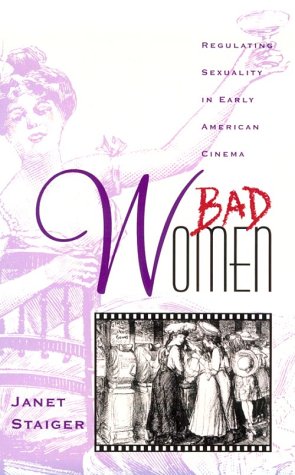How did cultural tensions about "appropriate" behaviour for women play out in early 20th-century films? Janet Steiger examines a classical period in Hollywood cinema during which the notion of the "bad woman" was created, magnified and spread nationwide. She isolates 1907-1915 as the key moment in the struggle over the meaning of "woman" as a sign, and illustrates how such issues as sexuality and hygiene were being reimagined to define an appropriate version of, and explanation for, women's sexuality. The early 1900s saw the repeal of reticence laws, opening up issues of behaviour and sexuality for wide discussion. The movies of the time portrayed "good women" as intelligent, self-assertive, and desiring - as long as what they desired was appropriate and their desire was not excessive. "Bad women" in turn, were wayward and oversexed. She proposes that these images of "good" and "bad" women suggested a middle-class vision of sexual morality, a vision that was not necessarilly repressive, rather a response to how women and women's sexuality might most appropriately fit a developing consumer society.
This work provides important and interesting insights about the role of cinema as a redemptive instrument during the progressive era. Staiger examines how self-regulation institutions within the film industry were advocates of one sector of the middle-class. She discusses what effect the formation of the National Board of Review and the New York City censorship board had on sexual regulation through an in-depth exploration of these films: Traffic in Souls", "A Fool There Was" and "The Cheat".
- ISBN10 0816626243
- ISBN13 9780816626243
- Publish Date 1 January 1995
- Publish Status Out of Print
- Out of Print 10 September 1998
- Publish Country US
- Imprint University of Minnesota Press
- Format Hardcover
- Pages 248
- Language English
